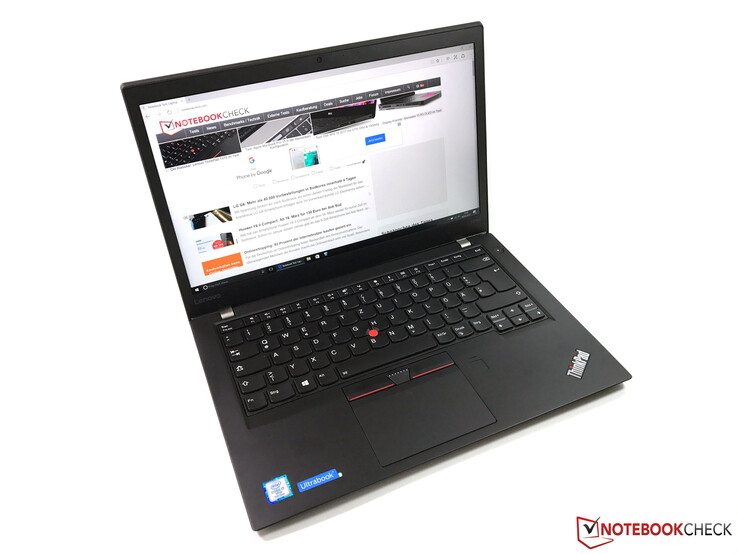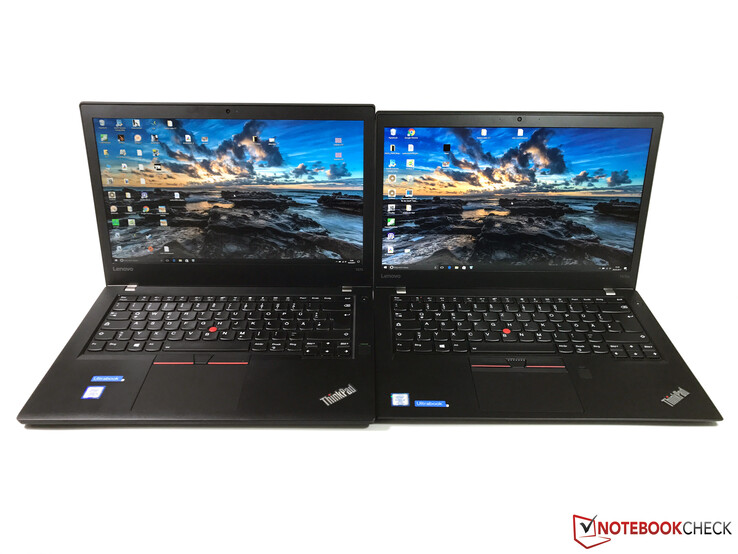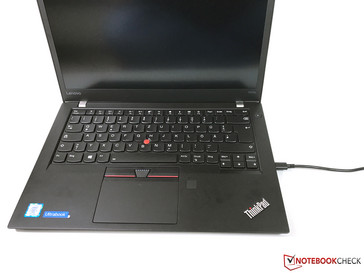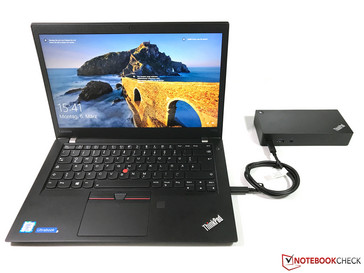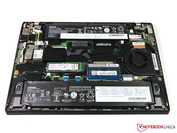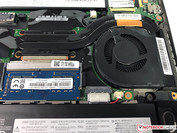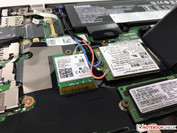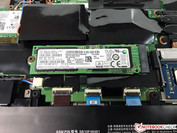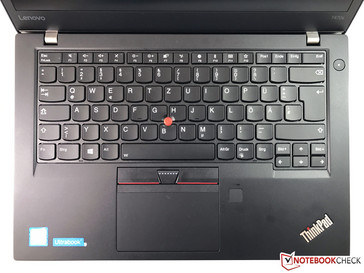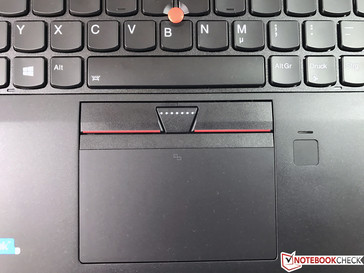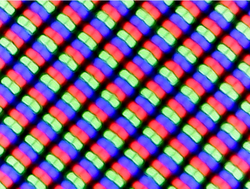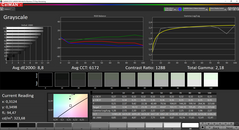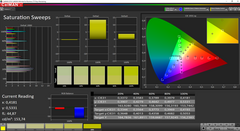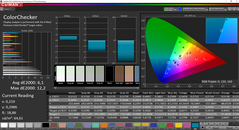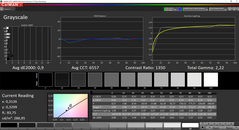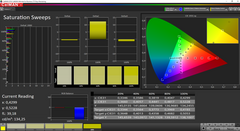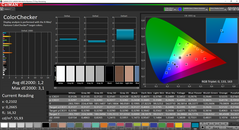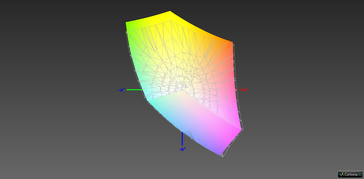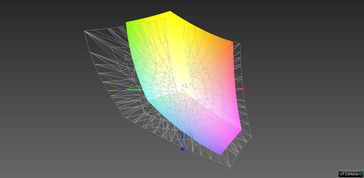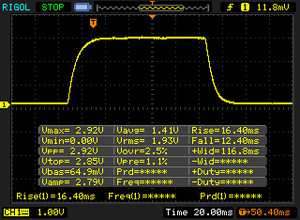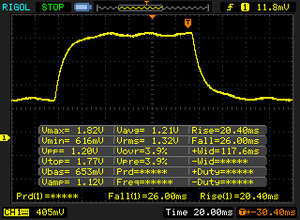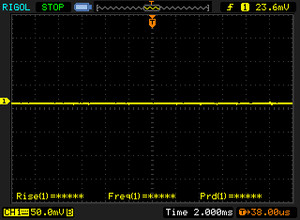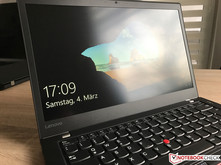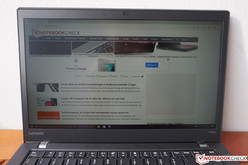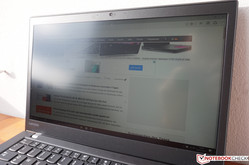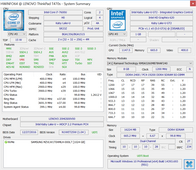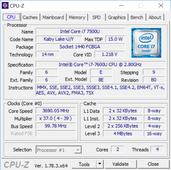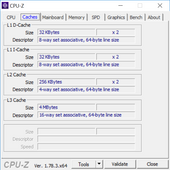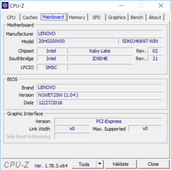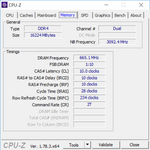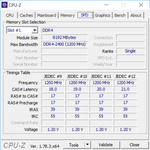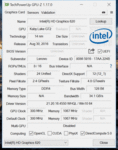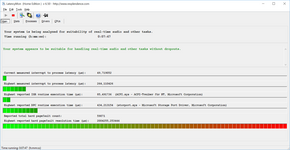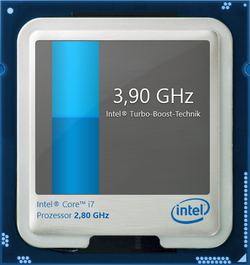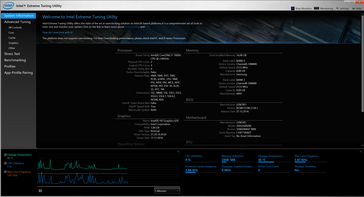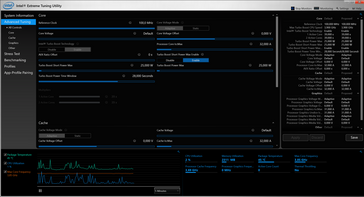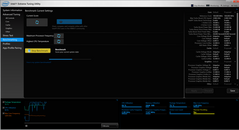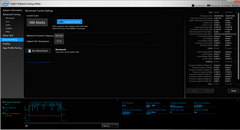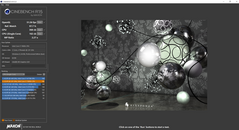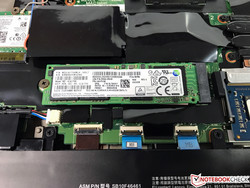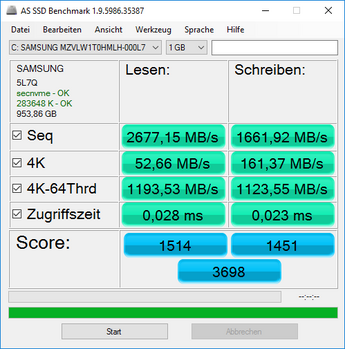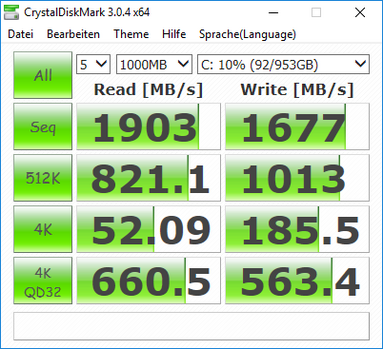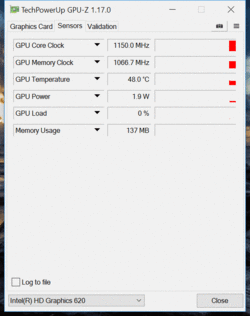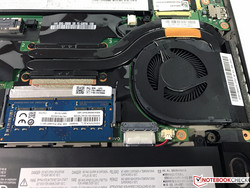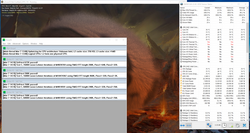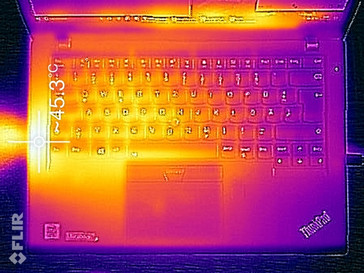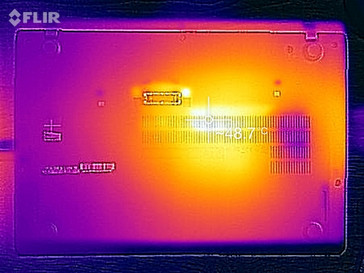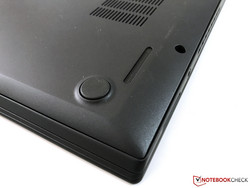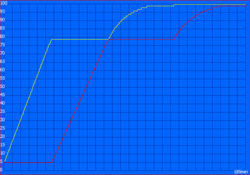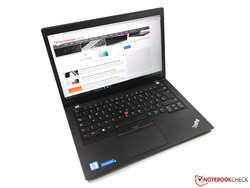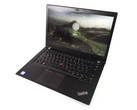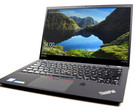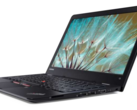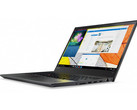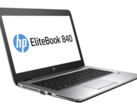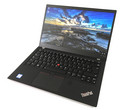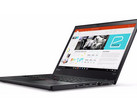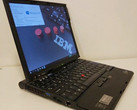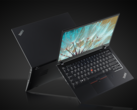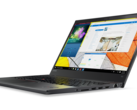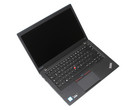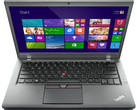Lenovo ThinkPad T470s (Core i7, WQHD) Laptop Review

For the original German review, see here.
Since we have already reviewed the new Lenovo ThinkPad T470, we can now focus on the new ThinkPad T470s. It is sitting right between the T470 and the flagship model ThinkPad X1 Carbon in Lenovo's 14-inch lineup. The construction is a bit more compact compared to the regular ThinkPad T470, but the biggest difference is the weight. Our test model is significantly lighter thanks to more expensive materials, which improves the mobility.
However, the ThinkPad T470s is one of the systems that Lenovo hardly updated this year, and the basic construction is identical to the previous ThinkPad T460s. The differences are limited to the implementation of a USB-C port (including Thunderbolt 3) and Intel's new Kaby Lake processors. Our test sample is also equipped with a different WQHD panel.
Our sample carries the designation 20HGS00V00 and represents the high-end campus (teacher & student) model for 2,099 Euros (~$2256). It is equipped with the fastest ULV Core i7 processor Intel currently offers, a WQHD panel, 16 GB RAM and a generous 1 TB NVMe-SSD from Samsung. There is no corresponding Topseller version for regular customers so far, but it should be a couple of hundred Euros more expensive. A corresponding model in Lenovo's online shop (configured) currently retails for almost 2,850 Euros (~$3063).
We will obviously compare the ThinkPad T470s with the new T470 in this article. The latter was able to reduce the gap a bit thanks to the updated chassis. Other rivals are high-end business notebooks from other big manufacturers like the Dell Latitude E7470 or the HP EliteBook 840 G4. We will also include the previous ThinkPad T460s in the comparisons, just like the even more portable ThinkPad X1 Carbon.
Change log:
- March 7th – Case, connectivity, display, CPU performance, battery runtime
- March 8th – BIOS updates, performance on battery, temperatures, stress test
- March 9th – SD-card reader, system noise, TPFanControl, power consumption
- March 14th – BIOS 1.07, warranty, input devices, system performance, storage devices, new NVMe driver, charging time, communication, security, accessories, viewing angles, speakers, verdict, rating, several additions
Case – Sturdy Magnesium Chassis
We have already mentioned that Lenovo did not change the chassis of the ThinkPad T470s compared to the previous T460s. You can immediately recognize the dark chassis as a ThinkPad and it does not attract any unwanted attention in productive environments.
The base unit is made of magnesium and there are no visible material transitions – you can call it a unibody construction. Only the bottom panel can be removed. High-end metal constructions still have a small advantage, but the ThinkPad T470s leaves an extremely sophisticated impression. The more expensive materials also have a positive effect on the weight as well as the stability. At just 1.36 kg (~3.0 lb), our test sample is very light and can easily be used on the lap or carried around for long periods.
The stability is also very good and you have to apply a lot of pressure to provoke some warping. However, the surfaces are rock solid during normal use. We cannot criticize Lenovo for the build quality, either. The two metal hinges allow a maximum opening angle of 180 degrees and are well adjusted, but they cannot prevent bouncing completely. You should still use both hands to open the lid.
The lid, which is made of a carbon fiber plastic hybrid, is still a bit weak. Especially pressure along the edges quickly results in ripples on the screen and clouding at the bottom, respectively. The panel can also be twisted with some force, but this does not affect the picture. There is no special maintenance hatch and the batteries are not accessible from the outside, either.
The ThinkPad T470 performed really well in our review, so many users probably want to know whether the additional price for the lighter T470s is worth it. We want to compare the two models directly. Despite similar dimensions, the two laptops have completely different constructions. We already mentioned that the more expensive T470s is comparable to a unibody construction, while the regular T470 has a kind of "chassis tub" with a cover panel on top. The different materials also affect the haptics, because the plastic of the T470 is noticeably rougher and less sophisticated. The T470s has a clear advantage in this respect, which is obviously the case for the weight as well. The regular T470 is not too heavy by any means, but you will still notice about 400 grams more (~0.9 lb) when you carry it around. It is therefore the better choice when you are often on the go. The footprint is very similar and the two laptops are ~19 millimeters (~0.75 in) high at the rear, but the more expensive T470s gets slimmer towards the front (16.9 mm/~0.67 in).
All comparison devices have similar footprints and the height does not differ all that much, either. The most compact laptop is the Lenovo ThinkPad X1 Carbon, although the new 2017 model (review soon) should have an even bigger advantage. All in all, however, all systems can easily be carried around.
Connectivity – Now with Thunderbolt 3
Lenovo only changed one thing in terms of the ports compared to the previous ThinkPad T460s: The Mini-DisplayPort was replaced by a modern USB-C port (Gen.2) including Thunderbolt 3 support with the full 40 Gbps. The port also supports power delivery (2.0) and video output via DisplayPort 1.2a. Our test model is also shipped with a corresponding 65-watt USB-C power adapter. However, the location at the center of the right side is a problem. You cannot use an external mouse on the right side and the cable is annoying here in general – it would have been much better towards the rear.
Otherwise, there is not much to criticize. Lenovo equips the T470s with a lot of ports, including a regular Slim-Tip power connector (regular power adapters work as well) and even a full-size Ethernet connector. There are also three regular USB-A ports (USB 3.1 Gen.1), so there should not be any problems. This is also the case for the performance of the USB ports; we can determine very good 390 MB/s in combination with our external Samsung SSD T3. The ports on the right side are a bit squeezed, and it can be tricky to use all of them at the same time. Then there is also the conventional docking port at the bottom, which is compatible with older models.
SD Card Reader
The SD card reader (card does not stick out) is located at the front of the left side. We check the performance with our reference card from Toshiba (Exceria Pro SDXC UHS-II 64 GB, up to 260 MB/s), but the test model cannot utilize the full potential.
AS SSD determines a maximum transfer rate of around 90 MB/s, while a 1 GB folder with jpeg pictures (~5 MB each) is transferred at almost 80 MB/s. The ThinkPad T470s is therefore on par with many other modern notebooks. One example with a significantly faster card reader is the full-fledged workstation Lenovo ThinkPad P70 at up to 251 MB/s.
| SD Card Reader | |
| average JPG Copy Test (av. of 3 runs) | |
| Lenovo ThinkPad P70-20ER000XUS | |
| Lenovo ThinkPad T470s-20HGS00V00 | |
| Lenovo ThinkPad T470-20HD002HGE | |
| Lenovo ThinkPad T460s-20FA003GGE | |
| maximum AS SSD Seq Read Test (1GB) | |
| Lenovo ThinkPad P70-20ER000XUS | |
| Lenovo ThinkPad T470s-20HGS00V00 | |
| Lenovo ThinkPad T470-20HD002HGE | |
| Lenovo ThinkPad T460s-20FA003GGE | |
Communication – LTE included
Our ThinkPad T470s is equipped with the popular Dual-Band Wireless-AC 8265 Wi-Fi module from Intel as well as a WWAN module (Sierra Wireless EM7455, M.2). Lenovo also offers the optional Wi-Gig card Intel 18625, which is required for the Wi-Gig docking station. Contrary to the ThinkPad T470, however, both technologies (WWAN & Wi-Gig) are mutually exclusive.
The Wi-Fi adapter supports all common standards including 802.11ac. Our standardized WLAN test with the router Linksys EA8500 shows a mixed picture though. While the receiving performance is very good at 639 Mbps on average, we can only determine ~300 Mbps transmitting. We repeated the test a couple of times, but the results were similar within a certain range.
Nothing changed for the webcam. The HD module does its job for video conferences, but you should use the smartphone or a real camera for decent snapshots. An external headset is often not required, because the dual-array microphone records voices loud and clear.
| Networking | |
| iperf3 transmit AX12 | |
| Apple MacBook Pro 15 2016 (2.6 GHz, 450) (Klaus I211) | |
| Lenovo ThinkPad T460s-20FA003GGE | |
| Lenovo ThinkPad T470-20HD002HGE | |
| HP EliteBook 840 G4-Z2V49ET ABD (jseb) | |
| Lenovo ThinkPad T470s-20HGS00V00 | |
| iperf3 receive AX12 | |
| Apple MacBook Pro 15 2016 (2.6 GHz, 450) (Klaus I211) | |
| Lenovo ThinkPad T470-20HD002HGE | |
| Lenovo ThinkPad T470s-20HGS00V00 | |
| Lenovo ThinkPad T460s-20FA003GGE | |
| HP EliteBook 840 G4-Z2V49ET ABD (jseb) | |
Security
Lenovo did not change the security equipment compared to the previous ThinkPad T460s, which is not an issue due to the comprehensive features. The touch fingerprint scanner is very fast and reliable, companies are happy about the SmartCard reader and the slot for a Kensington Lock keeps the laptop at its place. Lenovo implements a TPM 2.0 module and there are several passwords. All components and ports, respectively, can be configured individually in the BIOS.
Accessories
Our high-end SKU of the ThinkPad T470s is shipped with a 65-watt USB-C power adapter and a quick-start guide. Lenovo offers numerous optional accessories and the docking stations are particularly interesting. Lenovo still equips the T470s with a conventional docking port at the bottom, which is compatible with all products from the last couple of years. Lenovo also offers USB-C and Thunderbolt 3 solutions, but they are not a perfect match for the T470s due to the inconvenient location of the corresponding port at the ThinkPad T470s.
Maintenance
The whole bottom panel of the ThinkPad T470 is very easy to remove. You just have to loosen 5 screws and there are no annoying plastic clips. Even inexperienced users should not have any problems to access the components.
Once inside you see the two lithium-ion batteries, the single DDR4-RAM module, the M.2-SSD as well as the communication modules. Our test model is also equipped with the WWAN card in addition to the Wi-Fi module, but the necessary antennas should be prepared in other SKUs as well (LTE ready). You can also clean the fan.
Warranty
The ThinkPad T470s is shipped with a three-year on-site service in Germany and Austria, which also includes a bring-in international service. It is possible to expand the warranty period (up to 5 years) as well as the scope of the service (like accidental protection).
Please see our Guarantees, Return Policies and Warranties FAQ for country-specific information.
Input Devices
Keyboard
The keyboard of the ThinkPad T470s was not changed compared to the predecessor. It is still one of the best inputs in the mobile segment. The slightly concave keys of the black chiclet keyboard once again provide a rich feedback and frequent writers will be very happy. The key travel is also very generous for such a slim system and the whole keyboard area is very sturdy. However, the typing noise of the space bar is a bit loud.
Compared to the ThinkPad T470, we noticed a slightly higher resistance and the actuation force is a bit higher as well. However, the differences are small and will come down to your personal preference or what you are used to. Both models are definitely very good.
The layout differs a bit, which is typical for ThinkPads, but you can adjust some settings in the Lenovo Settings app or the BIOS, including switching the Fn and Ctrl keys or the function keys (special functions like volume up/down are triggered by default). Lenovo also uses a two-stage white illumination for this model, but we would have liked a brighter third level.
Touchpad
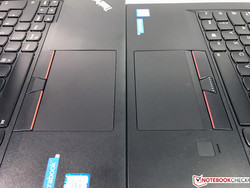
The area of the touchpad including the dedicated TrackPoint buttons did not change, either. However, the touchpad is now a (so-called) Precision touchpad, where inputs are processed by Windows directly and not a third-party driver. The Synaptics driver panel only offers a fraction of the features from previous models; all important settings can be adjusted in the Windows settings.
Both mouse replacements work very well in general and an external mouse is not really necessary. However, we can still see room for improvements, especially compared to the recently reviewed T470. There is a small strip between the touch-sensitive surface and the TrackPoint buttons, which does not accept inputs and wastes space. The three TrackPoint buttons (left and middle one in particular) clatter a bit more than on the updated ThinkPad T470 as well, but this does not affect the handling.
Display – Bright WQHD Panel
Lenovo offers the ThinkPad T470s either with Full HD or WQHD panels. Our test model is equipped with the high-resolution screen (2560 x 1440 pixels) based on the AHVA technology (IPS). Contrary to our test models of the previous T460s, however, the panel is now provided by AU Optronics (B140QAN01.5) instead of Panasonic. There might still be some panel lottery going on in this generation; you will only know what panel you have once you start the device and see the ID.
Our initial measurements determine much better results than on the T460s. The average luminance is decent at 311 nits and the black value is also very good at just 0.25 cd/m², which results in a great contrast ratio of 1300:1. Subjectively, we already like the picture ex-works, but there is a slight green cast. The panel does not use PWM to control the luminance.
Similar to the recently reviewed ThinkPad T470, the luminance on battery power is reduced by default, in this case to around 260 nits. The reason is once again the setting "Display Power-Saving Technology" in the Intel driver. Once this item is deactivated, (has to be done for every Windows profile individually), the full luminance can also be used on the go.
| |||||||||||||||||||||||||
Brightness Distribution: 88 %
Center on Battery: 323 cd/m²
Contrast: 1308:1 (Black: 0.25 cd/m²)
ΔE ColorChecker Calman: 6.1 | ∀{0.5-29.43 Ø4.78}
ΔE Greyscale Calman: 8.8 | ∀{0.09-98 Ø5}
94.88% sRGB (Argyll 1.6.3 3D)
61.56% AdobeRGB 1998 (Argyll 1.6.3 3D)
69.6% AdobeRGB 1998 (Argyll 3D)
95.1% sRGB (Argyll 3D)
69% Display P3 (Argyll 3D)
Gamma: 2.18
CCT: 6172 K
| Lenovo ThinkPad T470s-20HGS00V00 B140QAN01.5, , 2560x1440, 14" | Dell Latitude 14 7000 Series E7470 AUO B140QAN Dell PN F0WXVV, , 2560x1440, 14" | Lenovo ThinkPad T470-20HD002HGE N140HCA-EAB, , 1920x1080, 14" | Lenovo ThinkPad T460s-20FA003GGE VVX14T058J02, , 2560x1440, 14" | Lenovo ThinkPad X1 Carbon 20FB003RGE VVX14T058J00, , 2560x1440, 14" | |
|---|---|---|---|---|---|
| Display | -1% | -38% | 1% | -2% | |
| Display P3 Coverage (%) | 69 | 67.2 -3% | 41.6 -40% | 68.7 0% | 66.7 -3% |
| sRGB Coverage (%) | 95.1 | 95.9 1% | 61.9 -35% | 98.1 3% | 94.7 0% |
| AdobeRGB 1998 Coverage (%) | 69.6 | 69.3 0% | 43.06 -38% | 70.4 1% | 68.4 -2% |
| Response Times | 2% | -4% | 11% | 11% | |
| Response Time Grey 50% / Grey 80% * (ms) | 46.4 ? | 48 ? -3% | 41.6 ? 10% | 35.6 ? 23% | 44 ? 5% |
| Response Time Black / White * (ms) | 28.8 ? | 27 ? 6% | 34 ? -18% | 29.2 ? -1% | 24 ? 17% |
| PWM Frequency (Hz) | 220 ? | 220 ? | |||
| Screen | 18% | -11% | 2% | 8% | |
| Brightness middle (cd/m²) | 327 | 380 16% | 306 -6% | 257 -21% | 272 -17% |
| Brightness (cd/m²) | 311 | 354 14% | 287 -8% | 248 -20% | 268 -14% |
| Brightness Distribution (%) | 88 | 81 -8% | 88 0% | 94 7% | 95 8% |
| Black Level * (cd/m²) | 0.25 | 0.26 -4% | 0.3 -20% | 0.26 -4% | 0.32 -28% |
| Contrast (:1) | 1308 | 1462 12% | 1020 -22% | 988 -24% | 850 -35% |
| Colorchecker dE 2000 * | 6.1 | 3.11 49% | 6.2 -2% | 4.59 25% | 2.61 57% |
| Colorchecker dE 2000 max. * | 12.2 | 6.73 45% | 13.6 -11% | 9.72 20% | 6.43 47% |
| Greyscale dE 2000 * | 8.8 | 4.35 51% | 5.8 34% | 6.38 27% | 3.31 62% |
| Gamma | 2.18 101% | 2.37 93% | 2.04 108% | 2.51 88% | 2.35 94% |
| CCT | 6172 105% | 6771 96% | 6277 104% | 6238 104% | 6360 102% |
| Color Space (Percent of AdobeRGB 1998) (%) | 61.56 | 62 1% | 39.62 -36% | 65 6% | 63 2% |
| Color Space (Percent of sRGB) (%) | 94.88 | 96 1% | 61.44 -35% | 98 3% | 95 0% |
| Total Average (Program / Settings) | 6% /
12% | -18% /
-15% | 5% /
3% | 6% /
7% |
* ... smaller is better
Our measurements show the previously mentioned green cast, but also pretty high deviations for the grayscale and colors compared to the sRGB reference color space. Average DeltaE-2000 values of 8.8 (grayscale) and 6.1 (up to 12.2; colors) are not good results for an IPS panel. The color temperature is also a bit too warm at 6172 Kelvin (ideal: 6500 K).
We can see the potential of the display after a calibration with the professional software CalMAN and the X-Rite i1Pro 2 spectrophotometer. Once calibrated, we can see improvements across all measurements. The average deviations for the grayscale and the colors drop below the important limit of 3 and the green cast is gone. Both the color temperature and the gamma value are close to their respective ideal values as well. The panel of the ThinkPad T470s should therefore definitely be calibrated. If you cannot calibrate the panel by yourself, you should use our icc-profile, which is linked in the box above.
One problem of the Full HD screens from the ThinkPad T460s as well as the new T470 is the low color gamut, so these models are not really suitable for (semi) professional picture editing. The solution has been the optional WQHD screens so far, and this is here the case as well. Our panel from AU Optronics covers the smaller sRGB reference almost completely (95%) and AdobeRGB still by 61%. These are not dream results by any means, but much better compared to the FHD counterparts.
Display Response Times
| ↔ Response Time Black to White | ||
|---|---|---|
| 28.8 ms ... rise ↗ and fall ↘ combined | ↗ 16.4 ms rise | |
| ↘ 12.4 ms fall | ||
| The screen shows relatively slow response rates in our tests and may be too slow for gamers. In comparison, all tested devices range from 0.1 (minimum) to 240 (maximum) ms. » 75 % of all devices are better. This means that the measured response time is worse than the average of all tested devices (20.2 ms). | ||
| ↔ Response Time 50% Grey to 80% Grey | ||
| 46.4 ms ... rise ↗ and fall ↘ combined | ↗ 20.4 ms rise | |
| ↘ 26 ms fall | ||
| The screen shows slow response rates in our tests and will be unsatisfactory for gamers. In comparison, all tested devices range from 0.165 (minimum) to 636 (maximum) ms. » 80 % of all devices are better. This means that the measured response time is worse than the average of all tested devices (31.6 ms). | ||
Screen Flickering / PWM (Pulse-Width Modulation)
| Screen flickering / PWM not detected | |||
In comparison: 53 % of all tested devices do not use PWM to dim the display. If PWM was detected, an average of 8108 (minimum: 5 - maximum: 343500) Hz was measured. | |||
The T470s works pretty well outdoors thanks to the matte surface and the high luminance. Our pictures below were taken under light sunshine. You can work comfortably under these conditions when you adjust your sitting position and avoid direct sunlight. You should also avoid windows indoors if possible.
That Lenovo uses a high-quality IPS panel is also supported by the viewing angles. The picture is stable from all directions and we can only notice a slight contrast drop from angles from above. However, even multiple users can look at the screen simultaneously and enjoy a perfect picture.
Performance
The Lenovo ThinkPad is well equipped for all office workloads. Our test model is the high-end SKU with the fast Core i7 processor and the NVMe-SSD, but the less expensive models are equipped with modern processors and SSDs as well. The subjective performance should therefore not be a problem for any model.
A part of the memory is soldered onto the mainboard; either 4 or 8 GB RAM depending on the model. This has an effect on the maximum amount of memory as well (20 or 24 GB). Contrary to the ThinkPad T470, the more expensive T470s is not available with an optional dedicated graphics card.
Processor – Intel Core i7-7600U
The Core i7-7600U in our test model is currently the most powerful ULV CPU from Intel. The base frequency of the dual-core chip is 2.8 GHz, but the maximum Turbo Boost clock is 3.9 GHz – also for two active cores. The processor obviously supports Hyperthreading and can execute up to four threads simultaneously. ULV chips can usually consume up to 15 watts, and many manufacturers increase this value in the first seconds to compensate peak load scenarios. Lenovo even removed the usual limit for the previous ThinkPad T460s as well as the new ThinkPad T470 – the processor can consume up to 25 watts the whole time. This makes the optional Core i7 chips more interesting because you can also use the additional performance.
This is also the case for the ThinkPad T470s, but the cooling performance cannot keep up with the heat development. We can only see the maximum clock of 3.9 GHz when we stress one core. This is the case for Cinebench R15 Single, for example, where the Core i7-7600U beats the regular Core i5-7200U by more than 20% thanks to the high frequency. The consumption is around 15 watts in this scenario.
Stress for both cores, however, will quickly activate the rather conservative temperature limit at 75 °C (167 °F), where Lenovo reduces the clocks. We can never see the full 3.9 GHz in the CB R15 Multi benchmark, but the processor still runs at 3.5-3.6 GHz (~22 watts) in the beginning. It will drop to 3.3-3.4 GHz after a couple of seconds and the temperature levels off at ~70-72 °C (158-161.6 °F at ~18-19 watts). This means the processor cannot utilize its full performance, even when the machine is not already warmed up. Sustained workloads as our CB R15 Multi loop (50 runs) shows another performance drop by 7-8%. The additional charge for the Core i7 is therefore not worth it for all scenarios. More benchmarks for the Core i7-7600U and the other optional processors for the T470s are available in our Tech section.
Another problem is the performance on battery power, because the CPU cannot even maintain its base frequency. We can see between ~2.2-2.4 GHz in Cinebench R15 Multi, despite the High Performance power plan. The result is a score of just 203 points, a 45% performance drop! The adjustment of the BIOS settings did not help, either.
This behavior is suspicious, so we visited Lenovo's support homepage and installed all driver updates that are related to the energy management, including the latest BIOS version 1.06 from the end of February. There was unfortunately no change for the temperature limit, or the reduced performance on battery power.
Update March 14th: The BIOS update to version 1.07 from March 10th did not improve the behavior, either.
System Performance
The everyday performance of the ThinkPad T470s is very good. The fast NVMe-SSD ensures an extremely responsive system with short loading times when you launch applications. This impression is also supported by the synthetic PCMark benchmarks. The combination with the high CPU clock and the fast memory results in the top spot for the ThinkPad T470s in the comparison group.
| PCMark 7 - Score | |
| Lenovo ThinkPad T470s-20HGS00V00 | |
| Lenovo ThinkPad X1 Carbon 20FB003RGE | |
| Dell Latitude 14 7000 Series E7470 | |
| Lenovo ThinkPad T460s-20FA003GGE | |
| PCMark 7 Score | 6118 points | |
| PCMark 8 Home Score Accelerated v2 | 3968 points | |
| PCMark 8 Creative Score Accelerated v2 | 5050 points | |
| PCMark 8 Work Score Accelerated v2 | 4856 points | |
Help | ||
Storage Devices – Samsung NVMe-SSD
The storage situation for the ThinkPad T470s is limited since there is only a single M.2-2280 slot. It is at least attached via PCIe x4, so you can use the full potential of fast NVMe drives. Our test model is equipped with a Samsung PM961 M.2-SSD, which has a storage capacity of 1 TB. The benchmark results are very good and we see sequential transfer rates of around 1700 MB/s, and the important 4K results are not bad, either.
Contrary to the ThinkPad T470, the M.2-2242 slot cannot be equipped with an additional SSD according to Lenovo. This would not be possible on our test model anyway due to the LTE module, but this does not seem to be an option for SKUs without a WWAN module. More benchmarks for several hard drives are available in our steadily growing SSD/HDD comparison.
AS SSD often has problems with NVMe drives without special drivers and determines unrealistically low transfer rates. We therefore installed Samsung's NVM Express Drive 2.1 and repeated the benchmarks. AS SSD now determines realistic results. CrystalDiskMark determines a slightly higher sequential read performance, but there are only small differences for the other results (in both directions).
| Lenovo ThinkPad T470s-20HGS00V00 Samsung SSD PM961 1TB M.2 PCIe 3.0 x4 NVMe (MZVLW1T0) | Dell Latitude 14 7000 Series E7470 Samsung SSD PM851 M.2 2280 256GB | Lenovo ThinkPad T470-20HD002HGE Samsung PM961 NVMe MZVLW512HMJP | Lenovo ThinkPad T460s-20FA003GGE Samsung SSD SM951a 512GB M.2 PCIe 3.0 x4 NVMe (MZVKV512) | Lenovo ThinkPad X1 Carbon 20FB003RGE Samsung SSD PM871 MZNLN256HCHP | Lenovo ThinkPad E470-20H2S00400 SanDisk X400 SED 256GB, SATA (SD8TB8U-256G) | Fujitsu LifeBook U747 Samsung MZYTY256HDHP | |
|---|---|---|---|---|---|---|---|
| CrystalDiskMark 3.0 | -55% | -19% | 2% | -59% | -61% | -55% | |
| Read Seq (MB/s) | 1760 | 518 -71% | 1155 -34% | 1778 1% | 439.3 -75% | 476.5 -73% | 504 -71% |
| Write Seq (MB/s) | 1666 | 300.7 -82% | 1076 -35% | 1530 -8% | 308.1 -82% | 458.7 -72% | 497.8 -70% |
| Read 512 (MB/s) | 832 | 470.8 -43% | 811 -3% | 1339 61% | 299.5 -64% | 346.4 -58% | 396.7 -52% |
| Write 512 (MB/s) | 1064 | 214 -80% | 862 -19% | 1506 42% | 304.2 -71% | 291.1 -73% | 283.4 -73% |
| Read 4k (MB/s) | 53.2 | 36.32 -32% | 55.5 4% | 51.3 -4% | 34.05 -36% | 35.15 -34% | 35.73 -33% |
| Write 4k (MB/s) | 167.4 | 110.9 -34% | 134.6 -20% | 139.3 -17% | 86.5 -48% | 78.8 -53% | 87.8 -48% |
| Read 4k QD32 (MB/s) | 630 | 400.9 -36% | 496.2 -21% | 561 -11% | 339.6 -46% | 276 -56% | 399.1 -37% |
| Write 4k QD32 (MB/s) | 533 | 191.7 -64% | 425.4 -20% | 277 -48% | 279.2 -48% | 178.3 -67% | 249.7 -53% |
GPU Performance – Intel HD Graphics
All SKUs of the ThinkPad T470s are only equipped with the integrated processor graphics card; an optional dedicated GPU is not available. Our test model with the Core i7-7600U is also equipped with the most powerful version of the Intel HD Graphics 620 (24 Execution Units), which reaches a maximum core clock of 1150 MHz.
The test model manages a small lead over other models with the HD 620 in the synthetic 3DMark benchmarks thanks to the high clocks and the dual-channel memory configuration. We cans see an advantage of around 20% depending on the test, but a dedicated adapter like the Nvidia GeForce 940MX is up to 50% faster.
The GPU performance drops by almost 60% on battery power (758 vs. 1777 points @3DMark 11 GPU). More benchmarks with the HD Graphics 620 are listed here.
| 3DMark 06 Standard Score | 11506 points | |
| 3DMark 11 Performance | 1970 points | |
| 3DMark Ice Storm Standard Score | 69591 points | |
| 3DMark Cloud Gate Standard Score | 7147 points | |
| 3DMark Fire Strike Score | 1078 points | |
Help | ||
Gaming Performance
The gaming performance of the ThinkPad T470s is not particularly good, despite the dual-channel memory configuration. However, this is not a high priority for a business laptop. You are limited to older titles with the integrated graphics card, but you should keep the power adapter attached. While Tomb Raider ran smoothly at 37.5 fps in the Medium preset, it dropped to 26.9 fps on battery.
If you plan to use the laptop for private purposes as well and want to play some games, you might want to consider an optional graphics card via Thunderbolt 3. The dual-core ULV is certainly not ideal for this, but the Thunderbolt 3 port (full speed) does at least not limit the graphics card.
| low | med. | high | ultra | |
|---|---|---|---|---|
| Tomb Raider (2013) | 73.9 | 37.5 | 25.2 | 11.5 |
| BioShock Infinite (2013) | 47.1 | 26.7 | 23.4 | 7.6 |
| Battlefield 4 (2013) | 33.2 | 26.8 | 18.8 | 6.2 |
| The Witcher 3 (2015) | 8.3 | |||
| Rise of the Tomb Raider (2016) | 15.3 | 10.2 |
Emissions
System Noise
The cooling solution of the ThinkPad T470s consists of two heat pipes and one fan, which was also the case for the previous model. The fan is usually deactivated while idling and with light workloads. It only starts spinning at the lowest rpm level occasionally, but 30.1 dB(A) is only audible in very quiet environments.
The fan will react to load very quickly and already reaches the maximum noise level at medium workloads. The noise will increase in steps from 32, 35.2 all the way up to 39.2 dB(A) during the first minute of 3DMark 06. The fan also starts spinning frequently in practice (installation of applications, web browsing) independent of the Windows power profile.
This is also a difference compared to the previous T460s, where the fan delayed reacting to load scenarios and it was quieter at 33 dB(A) as well. However, both models are comparable under maximum load. You can clearly hear the 39.2 dB(A) from the T470s, but the dull murmur is not annoying. We cannot determine other noises, either.
We also used the tool TPFanControl to check whether the fan has more headroom to improve the cooling performance, even though the noise would be higher in return. However, the measured 39.2 dB(A) already represent the highest fan speed at ~4700 rpm.
Noise level
| Idle |
| 28.9 / 28.9 / 30.1 dB(A) |
| Load |
| 39.2 / 39.2 dB(A) |
 | ||
30 dB silent 40 dB(A) audible 50 dB(A) loud |
||
min: | ||
Temperature
The ThinkPad T470s is a very cool device while idling and with light workloads. We measure average temperatures of almost 24 °C (75.2 °F), so the surfaces are conveniently cool to touch and there is no hotspot in this scenario, either. However, we can notice higher temperatures compared to the previous model when we stress the system. The left part of the base (along the cooling unit) in particular warms up noticeably. Our measurement device determines up to 43.5 °C (110.3 °F) at the top and even 46.1 °C (114.98 °F) at the bottom (fan exhaust 45.6 °C/114.08 °F), which is noticeable when you use the laptop. The left keyboard area is much warmer during typing and you should not really use the system on your lap when under maximum load, either.
Our stress test with the tools Prime95 and FurMark reveals very interesting results. The maximum consumption (25 watts) can be maintained from the beginning and just slightly drops over the course of the test; we can still see ~22.5 watts after 70 Minutes. The processor runs at 2.4-2.8 GHz and the GPU at 1000-1050 MHz. This is a very good result for such a slim system. A 3DMark 11 run immediately after the stress test did not determine a lower score.
Particularly interesting is the temperature development. The processor never exceeds 3 GHz, so the chip temperature increases very slowly. While the temperature limit at 75 °C (167 °F) kicked in within seconds during the CPU benchmarks, it takes about 6 minutes in the stress test before 75 °C are exceeded and the consumption drops slightly to 24.5 watts. The two CPU cores seem to be quite the hot heads when the clocks surpass 3 GHz, and the cooling solution is a bit overwhelmed by the temperature development.
There would be two solutions for this problem: increasing the temperature limit or implement a more powerful cooling solution. The temperature limit could easily be increased via BIOS update, but this is unlikely considering the already high surface temperatures. If you pay the additional price for the faster processor, you also want to use the performance. Lenovo could have kept the processor below 75 °C at the maximum clocks with a more powerful cooling unit – certainly not too much to ask for a premium product.
(±) The maximum temperature on the upper side is 43.5 °C / 110 F, compared to the average of 34.3 °C / 94 F, ranging from 21.2 to 62.5 °C for the class Office.
(-) The bottom heats up to a maximum of 46.1 °C / 115 F, compared to the average of 36.8 °C / 98 F
(+) In idle usage, the average temperature for the upper side is 23.9 °C / 75 F, compared to the device average of 29.5 °C / 85 F.
(±) The palmrests and touchpad can get very hot to the touch with a maximum of 38.4 °C / 101.1 F.
(-) The average temperature of the palmrest area of similar devices was 27.6 °C / 81.7 F (-10.8 °C / -19.4 F).
Speakers
The two stereo speakers are not particularly loud at up to 72 dB(A), but the sound is pretty balanced. Voices are loud and clear and even music playback is pleasant at moderate volumes, at least if you do not need too much bass. You should use external solutions in this case. The playback via stereo jack is noise-free and the connection with our Bluetooth speaker (Denon Envaya Mini) was stable.
Lenovo ThinkPad T470s-20HGS00V00 audio analysis
(±) | speaker loudness is average but good (72.1 dB)
Bass 100 - 315 Hz
(±) | reduced bass - on average 14.2% lower than median
(±) | linearity of bass is average (11.1% delta to prev. frequency)
Mids 400 - 2000 Hz
(+) | balanced mids - only 3% away from median
(+) | mids are linear (6.6% delta to prev. frequency)
Highs 2 - 16 kHz
(+) | balanced highs - only 4.1% away from median
(±) | linearity of highs is average (8.3% delta to prev. frequency)
Overall 100 - 16.000 Hz
(±) | linearity of overall sound is average (20.5% difference to median)
Compared to same class
» 44% of all tested devices in this class were better, 10% similar, 46% worse
» The best had a delta of 7%, average was 21%, worst was 53%
Compared to all devices tested
» 53% of all tested devices were better, 8% similar, 39% worse
» The best had a delta of 4%, average was 24%, worst was 134%
Lenovo ThinkPad T470-20HD002HGE audio analysis
(±) | speaker loudness is average but good (80.4 dB)
Bass 100 - 315 Hz
(-) | nearly no bass - on average 16.6% lower than median
(±) | linearity of bass is average (8.8% delta to prev. frequency)
Mids 400 - 2000 Hz
(+) | balanced mids - only 4.3% away from median
(+) | mids are linear (6.7% delta to prev. frequency)
Highs 2 - 16 kHz
(±) | higher highs - on average 5.4% higher than median
(±) | linearity of highs is average (13.3% delta to prev. frequency)
Overall 100 - 16.000 Hz
(±) | linearity of overall sound is average (18.7% difference to median)
Compared to same class
» 33% of all tested devices in this class were better, 6% similar, 61% worse
» The best had a delta of 7%, average was 21%, worst was 53%
Compared to all devices tested
» 42% of all tested devices were better, 8% similar, 50% worse
» The best had a delta of 4%, average was 24%, worst was 134%
Frequency Comparison (Checkboxes select/deselectable!)
Energy Management
Power Consumption
We can see the impact of the brighter display in our idle measurements because the new ThinkPad T470s consumes a bit more power than the previous ThinkPad T460s. Up to 9 watts at the maximum luminance is still okay though when you consider the high resolution and the bright panel.
The load measurements clearly show the effect of the increased consumption limit for the processor. Our measurement device already indicates 42 watts under average load (simulated by the first scene of 3DMark 06), which is already much more than the usual ~30 watts for an ULV system. The maximum consumption in the stress test is 47.3 watts, and the value only drops a bit to 45-46 watts over the course of the test. This also explains the more powerful 65-watt power adapter. The smaller 45-watt unit would be just sufficient, but it would not have any headroom to charge the battery in this case.
| Off / Standby | |
| Idle | |
| Load |
|
Key:
min: | |
| Lenovo ThinkPad T470s-20HGS00V00 i7-7600U, HD Graphics 620, 2560x1440 | Dell Latitude 14 7000 Series E7470 6600U, HD Graphics 520, 2560x1440 | Lenovo ThinkPad T470-20HD002HGE i5-7200U, HD Graphics 620, 1920x1080 | Lenovo ThinkPad T460s-20FA003GGE 6600U, HD Graphics 520, 2560x1440 | Lenovo ThinkPad X1 Carbon 20FB003RGE 6500U, HD Graphics 520, 2560x1440 | HP EliteBook 840 G4-Z2V49ET ABD i5-7200U, HD Graphics 620, 1920x1080 | |
|---|---|---|---|---|---|---|
| Power Consumption | 7% | 29% | 14% | 17% | 29% | |
| Idle Minimum * (Watt) | 4.64 | 5.1 -10% | 3.21 31% | 3.8 18% | 3.8 18% | 2.9 37% |
| Idle Average * (Watt) | 8.93 | 8.5 5% | 6.15 31% | 7.1 20% | 7.1 20% | 5.6 37% |
| Idle Maximum * (Watt) | 9.12 | 10.1 -11% | 6.82 25% | 7.8 14% | 7.7 16% | 8.15 11% |
| Load Average * (Watt) | 42.2 | 35.2 17% | 28.5 32% | 36.3 14% | 30.2 28% | 30.6 27% |
| Load Maximum * (Watt) | 47.3 | 31 34% | 34.5 27% | 46 3% | 44.7 5% | 31 34% |
* ... smaller is better
Battery Runtime
The capacity of the two integrated lithium-ion batteries was slightly increased compared to the previous model and is now 51 Wh. We did not really understand the solution with two integrated batteries last year, and this did not change for the new model. The regular ThinkPad T470 with the combination of an integrated and an external battery definitely has an advantage in this respect.
We can see increased runtimes compared to the predecessor in our tests. Our Wi-Fi test at an adjusted luminance of 150 nits (73% for our test model) determined a decent runtime of 7 hours – 01:20 hours more than on the T460s (WQHD). The playback of a Full HD video (Big Buck Bunny, H.264, also 150 nits) is possible for 7.5 hours.
We list the result for the minimum runtime, but we have to check that value again. Contrary to the predecessor, we noticed that the new T470s reduces the processor performance on battery power significantly (minus ~40%), so the additional runtime of about 30 minutes is not surprising. We did not find a solution for this behavior so far (a change of the BIOS settings to Maximum Performance did not help, either). Another run confirmed our initial result. The maximum runtime at the lowest luminance and maximum power-saving features is a little more than 13 hours.
The charging time is not particularly quick at more than three hours, but the last 10% take – as usual – the longest time. The first battery is charged to 80%, then the second one to 80%, which takes 40 minutes each. Both batteries are then fully charged. Lenovo also equipped the USB-C port with an "Anti-Fry" protection to prevent damages from faulty USB-C power adapters. The connector is automatically deactivated when it detects the wrong voltage.
| Lenovo ThinkPad T470s-20HGS00V00 i7-7600U, HD Graphics 620, 51 Wh | Dell Latitude 14 7000 Series E7470 6600U, HD Graphics 520, 55 Wh | Lenovo ThinkPad T470-20HD002HGE i5-7200U, HD Graphics 620, 48 Wh | Lenovo ThinkPad T460s-20FA003GGE 6600U, HD Graphics 520, 49 Wh | Lenovo ThinkPad X1 Carbon 20FB003RGE 6500U, HD Graphics 520, 52 Wh | |
|---|---|---|---|---|---|
| Battery runtime | 1% | 18% | -16% | 14% | |
| Reader / Idle (h) | 13.1 | 13.9 6% | 15.7 20% | ||
| H.264 (h) | 7.6 | 10.4 37% | 6.6 -13% | 8.5 12% | |
| WiFi v1.3 (h) | 7 | 5.8 -17% | 7.3 4% | 5.7 -19% | 7.2 3% |
| Load (h) | 1.6 | 1.9 19% | 1.8 13% | 1 -37% | 1.9 19% |
Pros
Cons
Verdict
The ThinkPad T470s is one of the devices that Lenovo updated only a little this year. The previous T460s was already a very good business notebook, so this is not a big issue.
The chassis is still extremely well built. It is both light and stable thanks to high-quality materials like magnesium. The overall quality is one notch above the regular ThinkPad T470. The keyboard is still one of the best in the mobile segment, but there is still some room for improvements in terms of touchpad and TrackPoint buttons. The revised ThinkPad T470 gets a slightly higher score in this respect thanks to better TrackPoint buttons as well as the slightly bigger touchpad.
Lenovo also improved the WQHD panel, which is now equipped with a more powerful background illumination. The battery runtimes are better as well and there is now a future-proof USB-C/Thunderbolt 3 port, even though the location is rather inconvenient.
The new ThinkPad T470s is still a good business notebook with a light as well as sturdy chassis, a brighter WQHD panel and longer battery runtimes. The performance is also higher thanks to Kaby Lake, but the cooling solution has problems with the powerful processor. The performance is reduced significantly on battery power as well.
Lenovo did remove the consumption limit of the ULV processor on the previous T460s to utilize the full potential of the processor. This is also the case for the new Kaby Lake model, but the cooling solution is working at its limit. The processor gets very warm when the clocks surpass 3.3-3.4 GHz and the maximum 3.9 GHz can only be reached by one core. The conservative temperature limit adds to the problem. Another issue is the drastic performance reduction on battery power, although there is no apparent reason. We still hope for an update, but the two BIOS updates to version 1.06 & 1.07 did not help. We deduct 3 percent from the final rating for this performance limitation, so our test model misses a "very good" rating in its current state.
We will also review the Full HD model of the new ThinkPad T470s shortly.
Lenovo ThinkPad T470s-20HGS00V00
- 03/14/2017 v6 (old)
Andreas Osthoff




